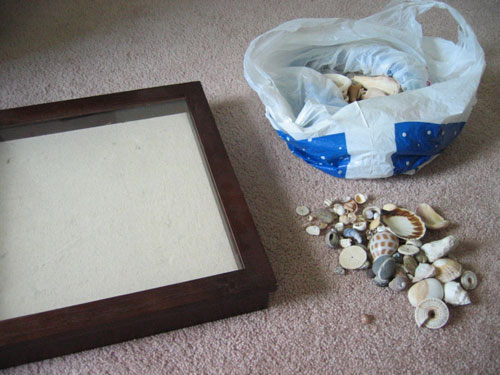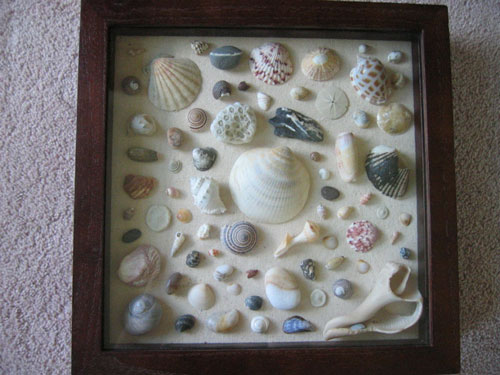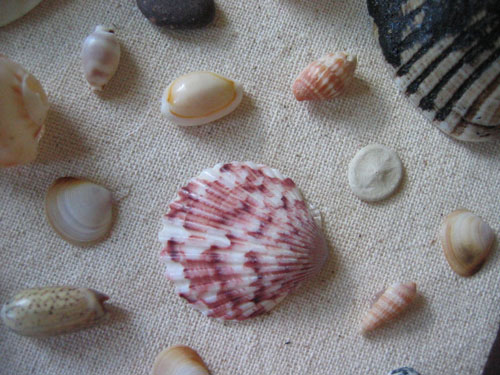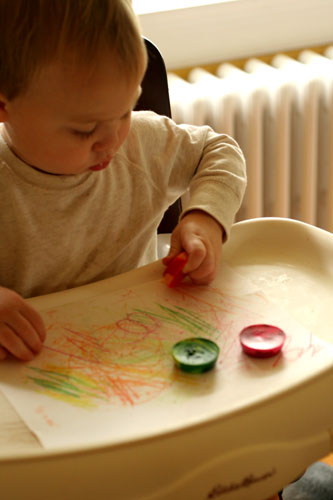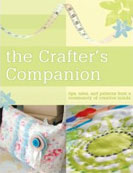Hello. My name is Joanna and I’m a paper addict. I hoard paper of all kinds. I do not discriminate against any texture, type or color. I love it all and never knowing when I might need it for a project, I keep it all. When I can no longer keep track of all the scraps, I know I must do what any self-respecting paper addict must do – make more paper! Here’s how I go about it.
First, gather your supplies:
- ~ Paper scraps with a matte finish (newspaper, tissue paper, construction paper or junk mail but try to avoid the glossy ads)
- ~ Several towels you don’t mind getting dirty
- ~ Blender
- ~ Deckle (this is what you use to strain the pulp, more on that later)
- ~ Container large enough to fit your deckle (my deckle makes a letter sized sheet of paper so I have found a large plastic storage bin works for me)
- ~ Sponge
- ~ Iron (optional)
To begin, you have to make your pulp:
1. Fill your plastic container with several inches of water. You need enough to submerge the deckle completely.
2. Tear your papers into small pieces about 1 inch square and add to the water.
3. Let soak until all of your pieces are completely wet. Any dry pieces will not break up entirely and will leave specks in your finished product. This can be desirable so feel free to vary your soaking times until you get the look you want.
4. With the blender 2/3 full of water, add your soaked pieces of paper and blend until smooth. This also varies the look of the finished product so feel to play with your blending times. Just remember that the smoother the pulp, the smoother the finished product.
5. Return processed pulp back to the plastic storage bin, stir to evenly distribute.
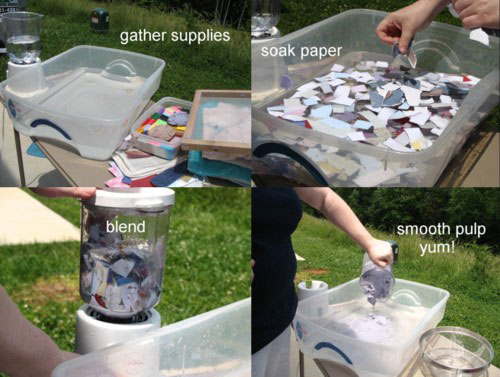
Next, you need to form the sheets. The shape of your deckle will determine the shape of your paper. I purchased mine at my local craft store but you can also make your own by using window screen stapled to a wood frame. I have never tried this so let me know how it turns out if you do!
1. Hold your deckle at an angle as you slide it into the pulp mixture. I go straight to the bottom of the container.
2. Swish it around while it’s submerged. This ensures an even layer of pulp covers the deckle.
3. Keeping the deckle horizontal, remove it from the water and let it begin draining. At this point you can move the pulp around if you need to.
4. Using the sponge, wipe across the screen side of the deckle to remove excess water. Take care how much you tilt the deckle as the pulp can still slide around.
5. I set my deckle on the side of the container to drain while I get the next step set up.
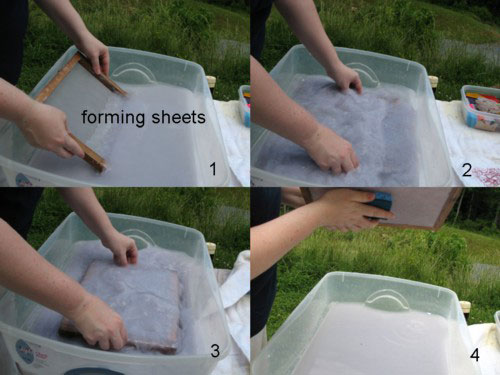
The next step is called couching (pronounced cooching)
1. Place a layer of towels on your surface.
2. Place the deckle screen side down onto the towels.
3. Lay another towel over top of the formed sheet (will be against the pulp) and press with your hands and the sponge to remove additional water.
4. Turn out sheet onto first layer of towels. Sheet should be dry enough to just fall off the deckle. If not, flip and press again. If this makes you nervous, leave the towel on the pulp and turn out the sheet onto it.
5. Layer sheets between towels and press to remove additional water.
6. Remove sheets and lay flat to dry.
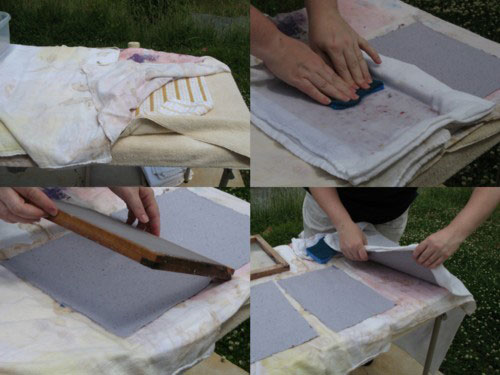
The last step is drying the sheets with an iron (which is optional). I like to iron my sheets dry not only because I’m horribly impatient but because the iron gives the paper a smooth finish.
1. With iron on high, start ironing the wet sheet while still sandwiched in between a towel.
2. Iron until towel starts to feel dry (enjoy the steamy facial in the process!)
3. Pull back top layer of towel and iron sheet itself. When the iron skips right across the sheet you’ll know it’s ready to be ironed directly. It will stick and pull the pulp if it’s not ready.
4. Iron until sheet is crisp and dry.
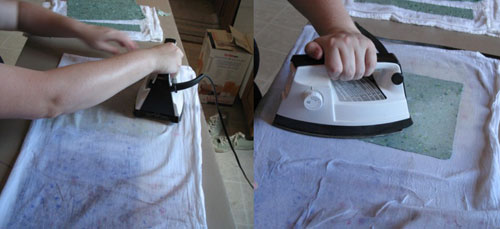
A note about colors:
The pulp will always be a few shades darker than the finished product. I like to use solid colored cardstock or tissue paper color the pulp. Since it’s heavier, the cardstock adds a nice speckle to the finished paper. Take care when using strong colors as the dyes can stain clothing.
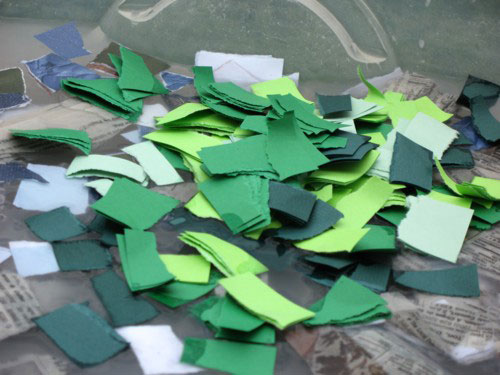
Clean up:
I like to do this outside because I make a mess whenever I do anything crafty. Since I’m already outside, I just dump the any left over pulp mixture in the yard when I’m finished (the pulp hangs around for a bit so choose an out of the way place for this). If you’re inside, strain the mixture before dumping it down the drain. Even outside, sometimes I will still strain it to save the unused pulp, especially if I liked the color. Once strained, press the pulp to remove as much water as possible and then let dry. The resulting chunk can be broken up and added to your next batch or add some white glue and sculpt with it!
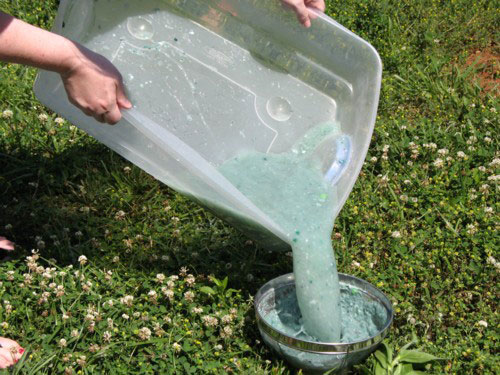
Here’s a sample of a few different textures and colors I’ve made recently. I simply varied the weight of the paper and how long it was processed in the blender.
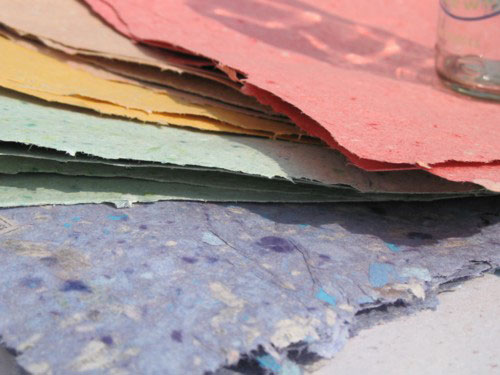
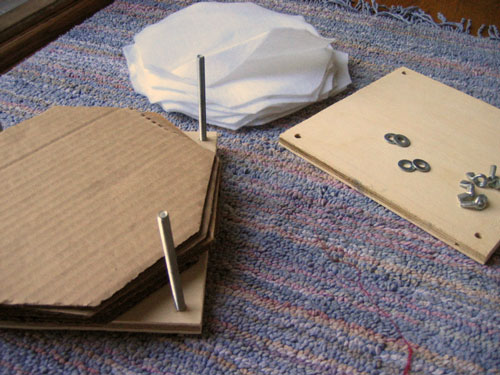
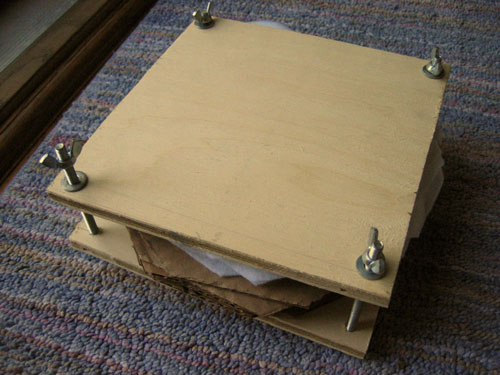
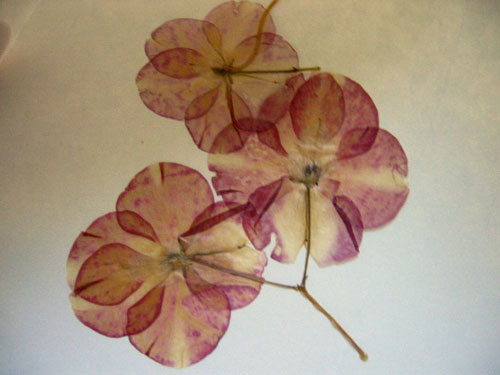
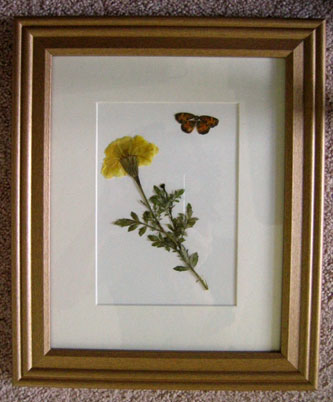
![]()

